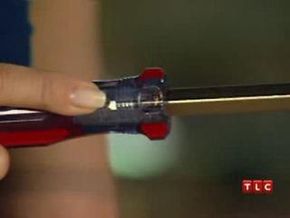In the 1930s, the auto industry was beginning to boom, and cars were being produced on an assembly line using automated power tools. Henry Phillips of the Phillips Screw Company in Portland, Ore., invented a screw that would take more torque than the usual screw with its single slot, on which the screwdriver would be easily centered and would be less likely to slip. He believed his newly designed screw, with its cross-shaped slot and its new screwdriver, would help improve the efficiency of the auto assembly line, allowing parts to be screwed into place easily and efficiently. It took longer than Phillips expected for the auto industry to catch on, but eventually he was proven right, and today the Phillips screw and screwdriver are common all over the world.
One of the main advantages of the Phillips system is that the screw and screwdriver together are self-centering. The x-shape of the screwdriver head fits into the similarly shaped slot of the screw and is held in place so the force of the torque is naturally centered, ensuring that the screw is driven straight. By comparison, with a regular, single-slot screw, the screwdriver can easily slip out of the center (and sometimes, out of the screw altogether) causing the screw to drive at an angle. A further advantage is that once the screw has reached its maximum torque, the screw driver "cams out": It pops out of the screw so the screw can't be overdriven, and the sides of the slot aren't damaged. It's not clear whether this was intended by design, but it's a helpful feature.
Advertisement
Henry Phillips patented his screwdriver and screw, and the technology related to them in 1936. However, the Phillips tool became so ubiquitous that in 1949 he lost the patent, although his name has remained linked to both the screwdriver and the screw.
